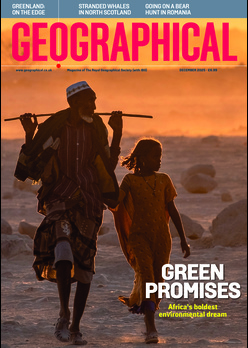

For Marco Magrini the agricultural transition is as important and urgent as the energy transition
When pondering the trouble with the climate crisis, people (and newspapers) usually visualise sprawling motorways clogged with traffic, or maybe towering smokestacks belching out polluting clouds. They very rarely think of green pastures filled with cows or giant crop fields crisscrossed by chemical-spraying tractors. Yet, our food system – while still far from filling all of the world’s bellies – makes almost a third of human-made greenhouse-gas emissions.
According to the UN Food and Agriculture Organization (FAO), this global system generates 21 per cent of all the world’s carbon dioxide (mostly from land use and deforestation), 53 per cent of all methane (mostly from animal respiration and manure) and 78 per cent of all nitrous oxide (mostly from fertilisers) emitted by human civilisation. After computing the effects of greenhouse gases relative to carbon over a 100-year period, that makes 17 billion tonnes of CO2/e, or ‘equivalents’.It is a remarkable 31 per cent of all anthropogenic emissions.
Overlooking agriculture’s contribution to climate change is common, though. At the yearly rite that is the UN conferences on climate, better known as COPs, agriculture is often left out of the picture. Unlike the case of fossil fuels, there are no powerful lobbies or entire petrostates being held up as villains. Of course, big business is also at play here, but the overlapping, universal imperative of food security complicates matters. Food security is a fundamental human right and a basic requirement for the survival of democracies and tyrannies alike.
Contribution of activities to total agricultural land use and land use change emissions in 2018

This is probably why, from 2000 to 2021, the global production of primary crop commodities increased by 54 per cent to 9.5 billion tonnes, more than double the world’s population growth. However, a lot of food is being wasted, and hunger is again on the rise with the help of wars and climate-induced droughts, floods and wildfires.
In theory, a more sustainable food system is possible. The European Union, which devotes €55 billion a year (a third of its budget) on subsidies to the agricultural sector, has put forward some ideas – gradually reduce pesticide and fertiliser usage, double organic food production and have some land rotating to fallow, in order to restore soil health and promote biodiversity. However, farmers from around the Union – afflicted by adverse climatic phenomena and by rising energy costs – didn’t appreciate the effort and expressed their sentiment in Brussels, shouting and throwing eggs. The EU promptly backtracked.
In practice, though, the fastest way to a more sustainable food system would be cutting meat consumption. Human beings use eight times more land for feeding animals than for feeding themselves, and this is, by the way, the primary driver for deforestation. Those feed-crops must be irrigated, and roughly 7,000 litres of water are needed to produce one pound of beef. Ruminants generate methane as a byproduct of their digestion. Pig manure emits carbon dioxide, methane and nitrous oxide. The Economist has calculated that beef emits 31 times more CO2 per calorie than tofu does. On the other hand, try to imagine Joe Biden’s probability of re-election if he asks his fellow citizens to cut back on the five billion hamburgers they consume, on average, each year.
Contribution of crops and livestock activities to total non-CO2 emissions from agriculture in 2018

On a more optimistic note, perhaps we can just rely on photosynthesis: plants grow by ‘eating’ carbon dioxide from the atmosphere. Big projects for planting millions of trees (up to one trillion, as per Donald Trump) have been touted, yet deforestation is sadly still in the lead. In addition, it seems it isn’t that simple – recent research has reversed previous beliefs. It turns out that, in warmer and drier climates, trees are struggling to absorb CO2.
If carbon concentrations grow, trees’ ability to sequester it will decrease. If meat consumption cannot be ‘phased down’ (as fossil fuels are theoretically poised to) more deforestation will be inevitable. If pesticide and fertiliser usage is not restrained, biodiversity will suffer and emissions will grow further. If we do not address emissions of all major greenhouse gases, it is not just the carbon system but the entire food system which will never be truly sustainable. The agricultural transition is neither easier, nor less urgent, than the energy transition.




